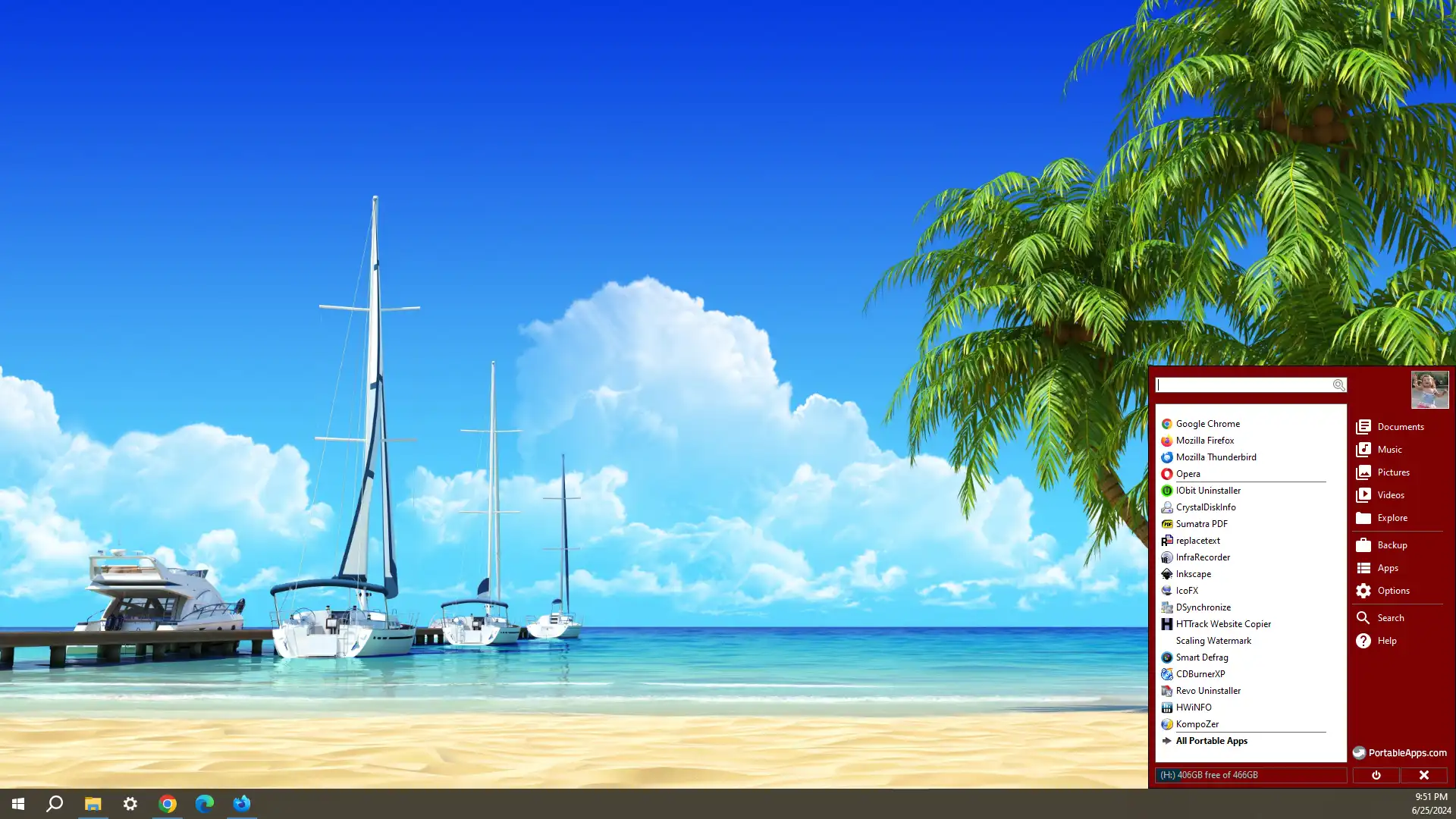In this article, we’ll explore the benefits of using portable software and provide you with a list of some of the best portable apps available. We’ll also show you how to create your own portable apps and give you some tips and tricks for getting the most out of them.
Here is a list of sections you will find in this article:
Portable Apps Menu Example
Introduction to Portable Software
Portable software, also known as “portable apps,” are software programs that can be run on multiple devices without the need for installation. They are typically stored on a USB drive or other portable storage device and can be run directly from that device. Portable apps are becoming increasingly popular among users due to their flexibility and convenience. With portable software, you can take your apps with you wherever you go and use them on any device with a compatible operating system.
Downloading the Best Portable Apps
The best website for downloading and organizing your portable apps is PortableApps.com
Benefits of Portable Software
There are several benefits to using portable software, including:
- Flexibility: Portable software can be used on any device with a compatible operating system, which means you can take your apps with you wherever you go.
- Convenience: Portable software eliminates the need for installation, which makes it easy to use on multiple devices.
- Security: Portable software is self-contained, which means it doesn’t leave any traces on the device it’s run on. This makes it a secure option for users who are concerned about their data.
- Customization: Portable software can be customized to suit the individual needs of the user.
Best Portable Apps
There are a wide variety of portable apps available, ranging from productivity tools to games. Some of the best portable apps include:
- 7-Zip: A powerful file archiver that supports various file formats.
- RIOT (Radical Image Optimization Tool): An image optimizer that reduces file size without sacrificing quality.
- Inkscape: A versatile vector graphics editor.
- Notepad++: A feature-rich text and code editor.
- Thunderbird: A free email application that’s easy to set up and customize.
- Foxit PDF Reader: A fast and secure PDF reader with a variety of features.
- Revo Uninstaller: A utility to help you remove unwanted software and clean your system.
- CrystalDiskInfo: A tool for monitoring the health and performance of your hard drives.
- CPU-Z: A tool that provides detailed information about your CPU and other system components.
- HWiNFO: A comprehensive hardware analysis and monitoring tool.
- LibreOffice Portable: A fully-featured office suite that includes a word processor, spreadsheet, and presentation software.
- Firefox Portable: A portable version of the popular Firefox web browser.
- GIMP Portable: A portable version of the popular open-source image editing software.
- VLC Media Player Portable: A portable version of the popular media player software.
How to Create Portable Apps
Creating portable apps is a great way to customize your software and make it work for you. There are a few different ways to create portable apps, including:
- Using a portable app creator: There are several portable app creators available, such as PortableApps.com Platform, that make it easy to create portable versions of your favorite apps.
- Manually creating portable apps: You can also create portable apps manually by copying the files and settings from the installed version of the app to a USB drive or other portable storage device.
Tips and Tricks for Using Portable Software
To get the most out of your portable apps, there are a few tips and tricks you should keep in mind, including:
- Keep your portable apps up to date: As with any software, it’s important to keep your portable apps up to date to ensure they are secure and function correctly.
- Use a USB drive or other portable storage device with enough storage: Portable apps can take up a lot of space, so make sure you have a USB drive or other portable storage device with enough storage to hold all of your apps.
- Keep your portable apps organized: To make it easy to find the apps you need, keep your portable apps organized in folders or use a portable app launcher.
Conclusion
Portable software offers a number of benefits for users, including flexibility, convenience, security, and customization. With the wide variety of portable apps available, from productivity tools to games, there’s something for everyone. By following the tips and tricks outlined in this article, you can make the most of your portable apps and enjoy all the benefits they have to offer.
For further reading, here are some resources:
More Reasons to Use Portable Apps
There are many good reasons why you should use as many portable software programs as possible. In this blog post I will explain some of the benefits of using portable software applications. By “installing” these applications on a USB drive or even on your computer you will save you time, money and possibly your business.
One of the top reasons people have begun to use portable software applications is they do not need to be installed on your computer, so these programs will not create registry entries that can slow down your computer over time and even cause instability (there are optional exceptions). Although the most common and suggested use for these programs is to install the portable software on a USB drive, I personally recoomend creating a folder on your hard drive and “installing” the programs you use most often there.
Another benefit of using portable software applications is it will make backing up and migrating your important information much easier. Portable applications do not create registry entries, which they can be moved, copied or transferred to another computer or device very easily.
I will be discussing using portable software as part of your backup program in a future post.





